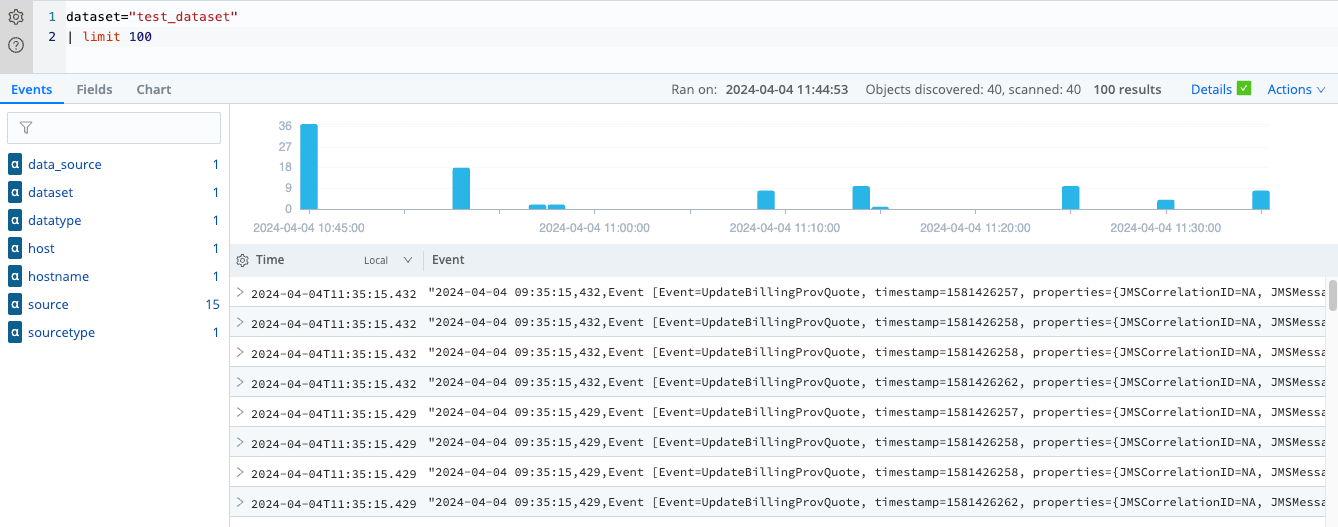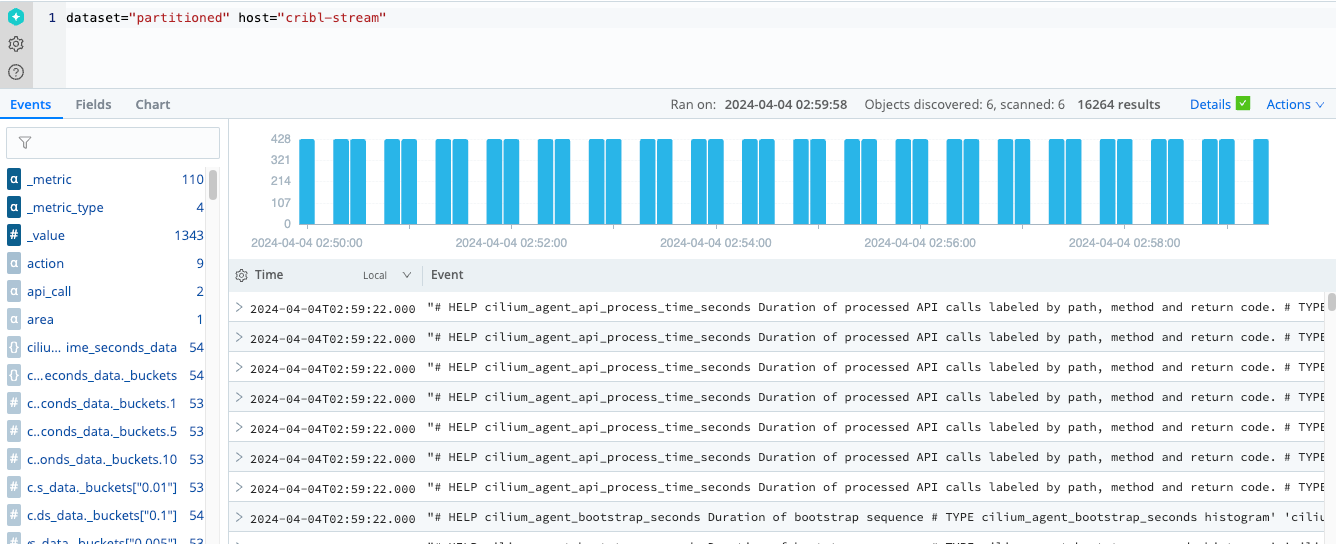Searching Cribl Lake
Learn how to search your Cribl Lake data.
This page provides example searches that you can run with Cribl Lake and Lakehouses.
Setting Up
To begin integrating Cribl Search with these data lakes, first see Connect to Cribl Lake.
Certain operators, functions, and data types behave differently when you search Cribl Lake Datasets with (versus without) Lakehouse caching. To avoid unexpected search results, see Lakehouse Search Differences.
Examples
Use these examples as starting points for your own searches.
Basic Search
This search specifies a Dataset (test_dataset) and limits the number of results.
dataset="test_dataset"
| limit 100
Lake Partition
This search uses a Lake partition named sourcetype
that is configured for the partitioned Dataset to speed up retrieval:
dataset="partitioned" host="cribl-stream"
Exported Data
The export operator lets you export search results to a Cribl Lake Dataset. You can later search this
Dataset to extract relevant data from it.
An efficient way to search exported data is to provide the search job ID to the where operator:
dataset="exported_data"
| where source contains "1713177481843.9AOqxI"You can find the search job ID in search details after running it, or in History, in the Search ID column.
You can also label exported events using the extend operator and then include the added fields in your
search. For example, during export you can include the user that performed the search:
dataset="cribl_search_sample"
| extend user = user()
| export to lake exported_dataYou can then search for data by this user:
dataset="exported_data"
| where user == "John Doe"




